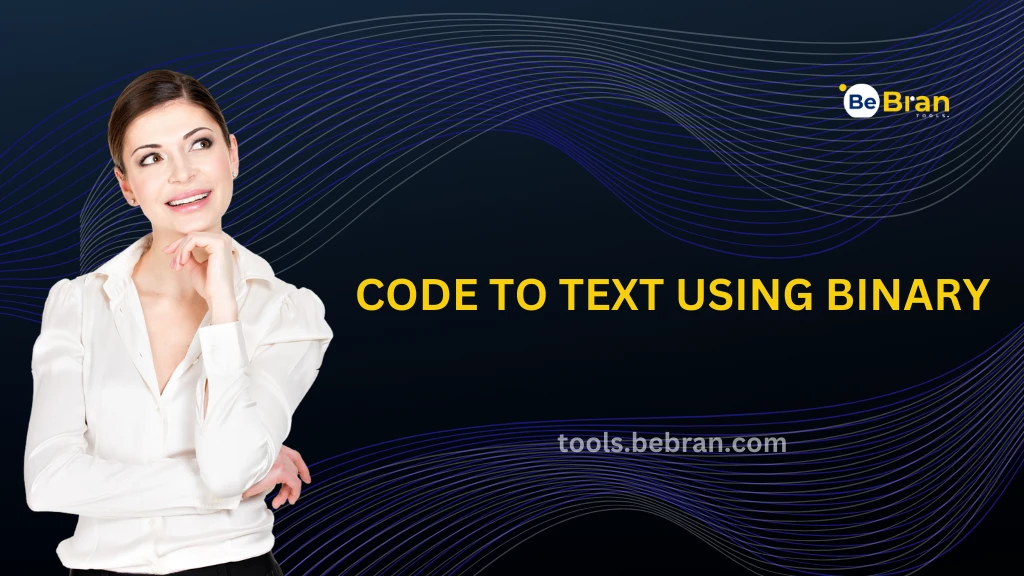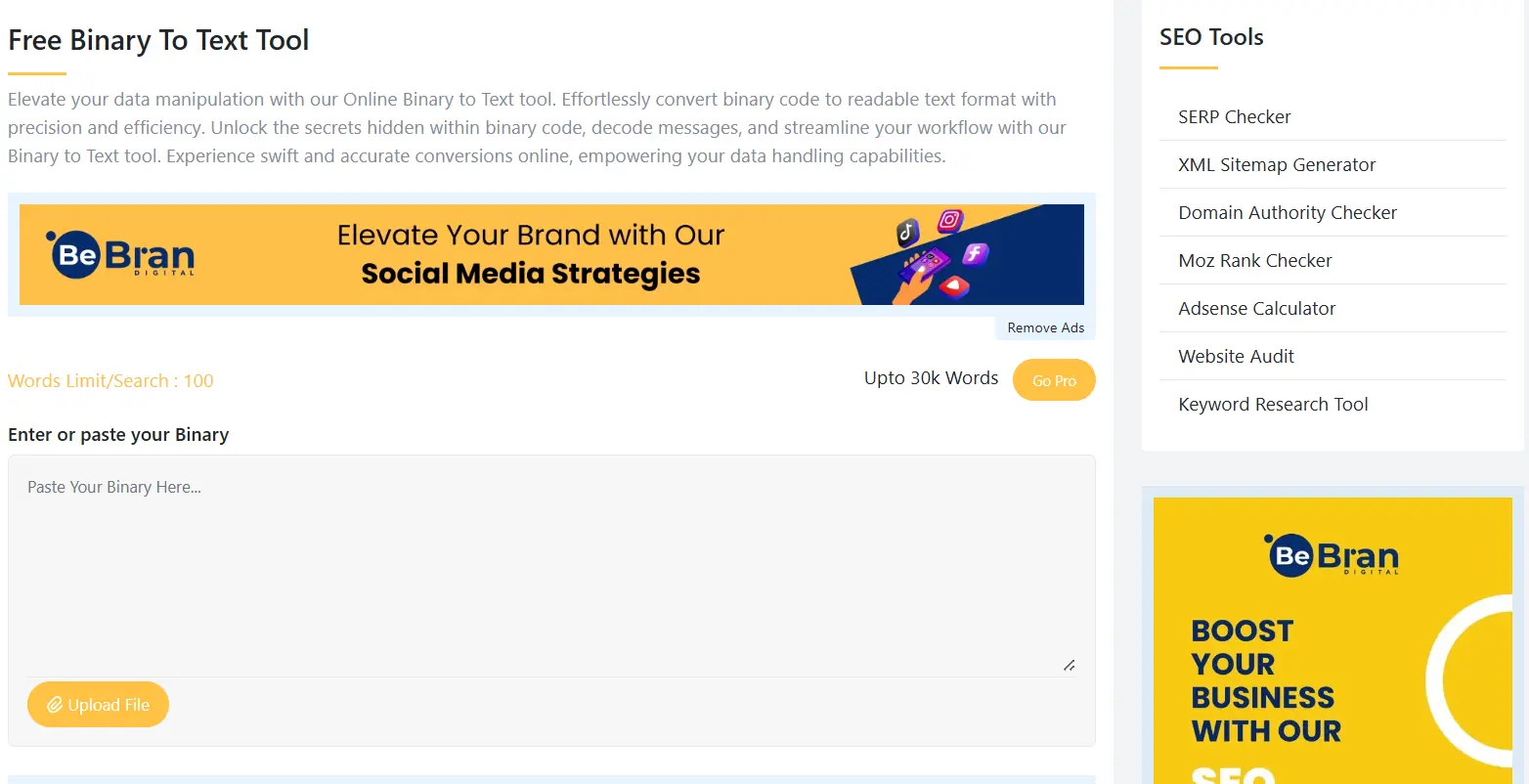
Code to Text Using Binary
Hey there, curious minds! Have you ever wondered about the magic concealed within the language of computers, known as binary code? The mystical combination of ones and zeros might seem complex, but fear not! Converting binary code into plain text is an intriguing process that holds the key to unlocking the wonders of digital communication. Join me as we unravel the power of binary and understand how it converts into everyday text.
Understanding the Basics of Binary Code
Before diving into decoding binary, let's grasp the fundamentals. Binary code operates on representing data using only two digits—0 and 1. Computers comprehend and process information in binary form, with each digit holding a significant value.
The Essence of 1s and 0s
In the world of binary, each digit represents a bit, forming sequences that convey information. It's similar to the way we construct numbers using digits in our decimal system, but binary uses only two digits, simplifying the language of computers.
Decoding Code to Text Using Binary
Now, let's uncover the mystery behind translating code to text using binary. There are several methods to accomplish this, with one of the simplest involving the use of an ASCII table.
ASCII Table: The Key Decoder

ASCII (American Standard Code for Information Interchange) assigns unique binary sequences to characters, enabling computers to interpret and display text. By referencing an ASCII table, binary sequences can be effortlessly converted into readable text.
Check this out: Binary To Text Conversion | Comparing Byte And Bit Conversion Tools A Comprehensive Review
Manual Conversion Techniques
Understanding the process of manually converting code to text using binary not only enhances your skills but also provides a deeper insight into the language of computers.
Deciphering Binary Sequences
To manually decode binary to text, segment the binary code into 8-bit chunks, each representing a character in the ASCII table. This method helps unravel binary sequences into comprehensible text.
Online Tools for Conversion
In today's digital era, numerous online tools simplify the conversion of code to text using binary, eliminating the need for manual decoding.
Effortless Binary to Text Converters
User-friendly websites and software swiftly translate binary strings into human-readable text. These tools instantly provide the corresponding text by inputting the binary sequence, making the process hassle-free.
Mastering the Art of Binary Decoding
While relying on tools can be convenient, understanding the underlying principles of binary decoding empowers you to interpret binary sequences without external aids.
The Value of Practice
Engaging in decoding exercises enhances familiarity with binary patterns, enabling accurate interpretation without solely depending on tools.
Free Tools: Free Meta Tag Generator Tool Online | Free JSON Validator Tool Online
The Significance of Binary in Digital Communication
The importance of binary extends far beyond computing, playing a vital role in various technological aspects and digital operations.
Real-World Applications
Binary serves as the foundation of computing systems, facilitating data transmission, storage, and programming languages.
Read More: Binary To Ascii Conversion | The Ultimate Travelers Guide To Voltage Converters
Conclusion
In conclusion, convert binary code into text is an accessible skill that unveils the language of computers. With a grasp of binary basics and the assistance of tools or manual decoding, unraveling the secrets behind 1s and 0s becomes an achievable feat.
Ready to embark on the journey of decoding binary into text? Embrace the simplicity hidden within the binary language, and soon you'll effortlessly translate those enigmatic sequences into meaningful and comprehensible text!
Frequently Asked Questions
1. What is the meaning of 01001000 01100101 01101100 01101100 01101111 00100001?
The binary sequence "01001000 01100101 01101100 01101100 01101111 00100001" translates to "Hello!" in ASCII. Each set of 8 bits represents a letter or character, spelling out the greeting "Hello!" when combined.
2. How do I convert a binary file to a text file?
Converting a binary file to a text file involves using specific software or programming languages that can interpret the binary data and translate it into readable text. This process might require programming skills or dedicated conversion tools.
3. What is the binary code 01000001?
The binary code 01000001 represents the letter "A" in the ASCII encoding system. In ASCII, each character has a unique binary representation, and 01000001 corresponds to the character "A".
4. How do I convert a bin file to readable?
To convert a .bin file to a readable format, you can use specialized software or programming languages capable of interpreting the binary data and converting it into a readable format like text or other data types.
5. Is .txt a binary file?
No, .txt files are text files. They store data as readable characters using encoding systems like ASCII or Unicode, unlike binary files that contain data in a format of 0s and 1s.
6. Is a text file binary or ASCII?
Text files use encoding systems like ASCII or Unicode to represent characters as readable text. They are not binary files and store data using characters that are easily understood by humans.
7. Is CSV binary or text?
CSV (Comma-Separated Values) files are text files. They store data as plain text, separating values with commas or other delimiters to make the data readable and accessible.
8. Is XML binary or text?
XML (Extensible Markup Language) files are text files. They use markup to structure data and are human-readable, unlike binary files that store data in a format of 0s and 1s.
9. What is an example of a binary text file?
An example of a binary text file might include encrypted messages or encoded data that appear as sequences of 0s and 1s, requiring specific tools or software to interpret it.
10. How do you convert binary to text manually?
To manually convert binary to text, break the binary into groups of 8 bits (bytes), match each byte to its corresponding character in an ASCII table, and then combine these characters to form readable text.
11. How do you convert code to text using binary?
Binary code can be converted using programming languages, software, or online converters designed to interpret binary data and convert it into readable formats like text or other data types.
12. Who converts the binary data to a human-readable format?
Specialized software, programming languages, or conversion tools are used to convert binary data into human-readable formats like text or other data types.
13. How does binary to text work?
Binary-to-text conversion works by assigning characters to binary sequences using encoding systems like ASCII or Unicode. Each binary sequence corresponds to a character, enabling translation into readable text.
14. How to convert 10101 binary to decimal?
To convert 10101 binary to decimal, use the positional value of each bit. In this case, 10101 represents the decimal number 21 in the binary system.
15. How do I open binary code?
Opening binary code requires specific software or tools capable of interpreting and displaying binary data. Hex editors or dedicated programs can help view and analyze binary information.



